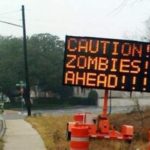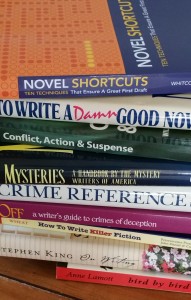I’m sure there are authors who decide to write a series of novels who know the plot of each book in the series before beginning page one of book one. Anyone who knows me knows I am not among those authors. I simply cannot be that organized. Given the fluid nature of the publishing world, I’m not certain that’s always the best approach. After all, I might need to introduce a zombie in my next book.
Just kidding. I shall stay true to my characters and my genre and write not to the market, but where my passion lies and what works for me. That’s a topic for another post.
As I begin book three in my series of humorous suspense novels, I’ve been reading and re-reading some great books on writing, including James Frey’s How to Write a Damn Good Novel, a few by James Scott Bell, and Write Away by Elizabeth George. I’ve also found a couple of books to help me get started faster.
The first is Novel Shortcuts, Ten Techniques that Ensure a Great First Draft, by Laura Whitcomb. Another useful one is How to Write Killer Fiction by Carolyn Wheat.
- Write with the end in mind. Figure out at least in a rough, written sketch how the book will end, who will triumph, who will be whumped on, who will laugh last.
2. The essence of good fiction is conflict. Through conflict, characters and situations change. Write a character arc for the protagonist, the antagonist and any major secondary characters. What does the character want? Why? (Motivation) How hard will she try for it? Will she achieve it? What will she give up to achieve this desire?
3. What’s the overall conflict in the book? Who opposes the protagonist’s achieving his or her goal?
4. Every chapter and every scene must have a purpose or it shouldn’t be there. It must contain conflict and emotion and it must result in a change, in the main character or in the plot conflict or in a character’s plot arc (preferably in all of these).
Whitcomb recommends writing a three-part, one pager for each scene or chapter. First describe what will happen (narrative, Joe Friday style, “just the facts, ma’am”). Next, jot down some nuggets of dialog that fit the scene. Then use what Whitcomb terms “heartstorming” to come up with the emotions and the emotional transition that takes place in the chapter. The one-pager can be single spaced, with different fonts or boldface to distinguish the parts.
You might also mind-map each chapter, with the central event at the hub, with emotions, dialog nuggets and clues on the spokes.
Whatever your approach, include notes not just on the plot, but on the characters’ emotional states and how they change through the book.
Once you have these, start writing. I believe you’ll find that having a map before you go will shorten the process, improve the end product and preserve your sanity.
What have you found (books, techniques, tips) to help you launch your books?